by Mark Tancig | May 25, 2017
One of the main Florida-Friendly Landscaping principles is to plant the right plant in the right place. In Florida, not only does this apply to the zone you’re in, soils you have, and light conditions in your garden, but also ensuring that invasive, exotic plant species are not used. While most of us have heard about invasive, exotic plants – those that invade and disrupt our unique natural habitats – some may not know where or how to find out which plants are, in fact, invasive and exotic. Some of the more famous invasive, exotic plant species, such as kudzu and hydrilla, are familiar to us and we may have an idea of a plant in our garden that is “aggressive”, but how do we know for sure? Since only a handful of the worst invasive, exotic plants are legally prohibited from being sold, how do we know if a plant we are considering purchasing at our local nursery or another plant already in our gardens is an invasive, exotic? A quick internet search for Florida invasive plants gets you various sources of information. How do you choose which to use?

The unique habitats of Florida need our help. Prevent the spread of invasive, exotic species by planting Florida-Friendly plants. Source: Mark Tancig/UF/IFAS.
Fortunately, the researchers at UF/IFAS want you to be able to find the best information in one spot – the UF/IFAS Assessment of Non-Native Plants in Florida’s Natural Areas. This site systematically reviews individual plant species and provides a recommendation as to whether it should be used in North, Central, or South Florida landscapes. Many landscape plants have been reviewed – over 800 – and more are added to the site as reviews are completed. The UF/IFAS Assessment also reviews cultivars of known invasive, exotic plants to ensure that they are sterile and will not revert back to their wild type or hybridize with known invasives, or even closely related native species.
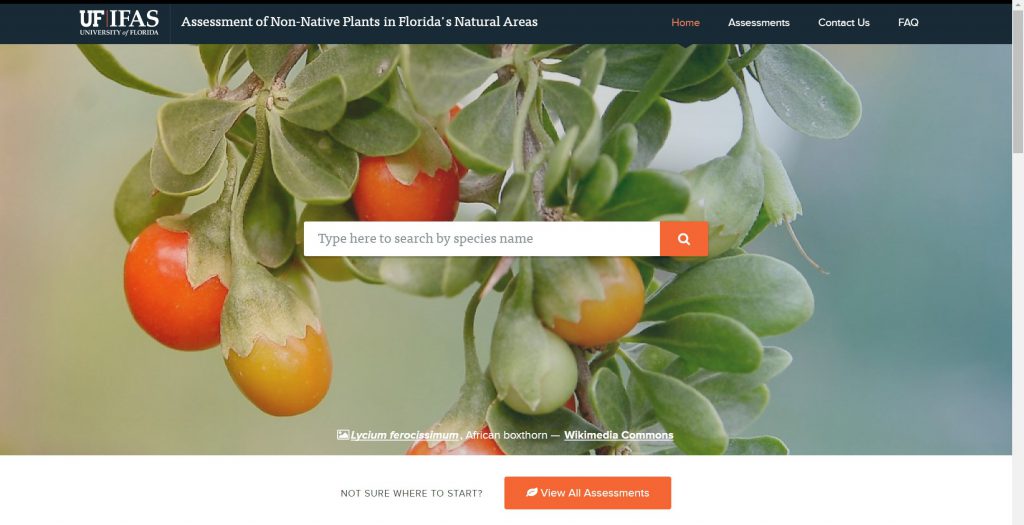
The UF/IFAS Assessment is a simple, convenient source for deciding if a plant should be used in your Florida landscape.
To use the site, simply visit the main web address – assessment.ifas.ufl.edu – and begin typing in your plant name in the search bar. You can begin spelling the scientific or common name and it will start showing possible results as you type. Once you select the plant you’re interested in, it will take you to a new page with photos of the plant, some general information, additional links, and, most importantly, the assessment conclusion for each zone. The conclusion will be one of the following:
- Not considered a problem species at this time,
- Caution, or
- Invasive
Of course, if it’s not a problem, then feel free to use and share that particular plant. If it is a caution plant, then it may be used, but you will want to be extra careful in where you plant it. Those may be better suited as potted plants or planted in areas that are confined, to limit its potential spread. If it’s invasive, don’t plant it.
Caution plants are reassessed every two years while those that are not considered a problem species or are considered invasive are reassessed every ten years.
Another way to use the UF/IFAS Assessment is to filter all reviewed plants by various criteria you’re interested in. If you select assessments on the main page, it will lead you to a list of all reviewed plants. A filter button allows you to choose geographic zone, conclusion type, and growth habit, among some other criteria. This will create a list that can then be exported to a Microsoft Excel table.
As you can see, UF/IFAS is trying to make it easy for you to determine which plants can be used in the landscape without potentially spreading and causing disruption to our unique natural areas.
If you have any questions about individual species that have or have not been assessed, contact your local County Extension Office.
by Sheila Dunning | May 25, 2017
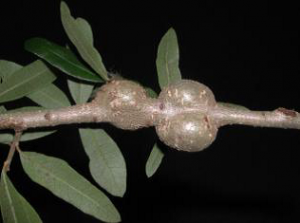 As oak trees are now fully leafing out and people start hanging out in the shade of the canopy, many of you are noticing strange growths on the branches. They look like potatoes, spiky cones and fuzz balls on the leaves and stems. Don’t worry. It’s just a harmless wasp that chose that tree to create a nursery for her young.
As oak trees are now fully leafing out and people start hanging out in the shade of the canopy, many of you are noticing strange growths on the branches. They look like potatoes, spiky cones and fuzz balls on the leaves and stems. Don’t worry. It’s just a harmless wasp that chose that tree to create a nursery for her young.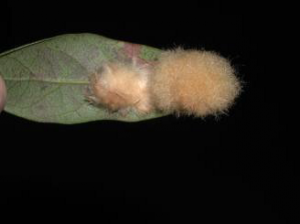
Galls are abnormal plant growth or swellings comprised of plant tissue. Galls are usually found on foliage or twigs. These unusual deformities are caused by plant growth-regulating chemicals produced by tiny wasps. The chemicals produced by these insects interfere with normal plant cell growth.
The life cycles of the various gall-forming wasps are highly variable. Two or more years are required for gall wasps that develop in woody twig galls to reach maturity. Gall-forming wasps usually overwinter as adults in protected places away from the host tree. As the buds break in the spring and the leaves begin to expand, these small wasps start to lay their eggs in expanding plant tissue. During the egg-laying process or early larval-feeding period, specialized body glands secrete growth-regulating chemicals that interact with certain plant chemicals to produce these abnormal growths.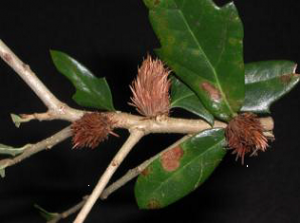
After a brief period of cell growth, gall development stops completely. Once these galls are formed, they do not continue to use nutrients from the host plant. The insect is confined within “its house” and feeds only on gall tissue during the remainder of its development. The galls provide shelter, protection, and food for the immature wasps. Inside a gall, the larvae are surrounded by tissues rich in nutrients
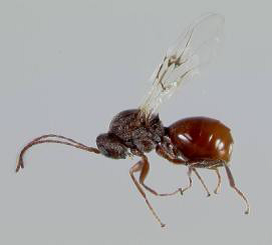 There are a variety of gall-forming species of small wasps that commonly infest oak, Quercus spp ., trees. Galls generally are aesthetically objectionable to homeowners who find them unattractive and fear that galls will cause damage to the health of their oak trees. Most leaf galls on oak cause little or no harm to the health of a tree. However, twig or branch galls may cause injury by distorting branch development in a heavily infested tree.
There are a variety of gall-forming species of small wasps that commonly infest oak, Quercus spp ., trees. Galls generally are aesthetically objectionable to homeowners who find them unattractive and fear that galls will cause damage to the health of their oak trees. Most leaf galls on oak cause little or no harm to the health of a tree. However, twig or branch galls may cause injury by distorting branch development in a heavily infested tree.
Chemical control is seldom suggested for management of leaf galls on oak. Cultural methods of control may be effective in reducing the impact of these insects. Some fallen leaves may harbor various life stages of gall-producing pests. Therefore, it may be useful to collect and destroy all infested leaves. Some of these pests overwinter in twigs and branches of oak. Where such woody galls are detected, prune and destroy the infested plant material when the galls are small and have just started to develop. But, remember every bug needs a home!
All photos by Eileen Buss, UF Entomologist
by Daniel J. Leonard | May 18, 2017
If you’re like me, growing turfgrass is often more of a hassle than anything else. Regardless of the species you plant, none tolerates shade well and it can seem like there is a never-ending list of chores and expenses that accompany lawn grass: mowing (at least one a week during the summer), fertilizing, and constantly battling weeds, disease and bugs. Wouldn’t it be nice if there were an acceptable alternative, at least for the parts of the lawn that get a little less foot traffic or are shady? Turns out there is! Enter the wonderful world of perennial groundcovers!
Perennial groundcovers are just that, plants that are either evergreen or herbaceous (killed to the ground by frost, similar to turfgrass) and are aggressive enough to cover the ground quickly. Once established, these solid masses of stylish, easy to grow plants serve many of the same functions traditional turf lawns do without all the hassle: choke out weeds, provide pleasing aesthetics, reduce erosion and runoff, and provide a habitat for beneficial insects and wildlife.
The two most common turfgrass replacements found in Northwest Florida are Ornamental Perennial Peanut (Arachis glabra) and Asiatic Jasmine (Trachelospermum asiaticum); though a native species of Mimosa (Mimosa strigillosa) is gaining popularity also. All of these plants are outstanding groundcovers but each fills a specific niche in the landscape.

Perennial Peanut Lawn
Perennial Peanut is a beautiful, aggressive groundcover that spreads through underground rhizomes and possesses showy yellow flowers throughout the year; the show stops only in the coldest winters when the plant is burned back to the ground by frost. It thrives in sunny, well-drained soils, needs no supplemental irrigation once established and because it is a legume, requires little to no supplemental fertilizer. It even thrives in coastal areas that are subject to periodic salt spray! If Perennial Peanut ever begins to look a little unkempt, a quick mowing at 3-4” will enhance its appearance.

Asiatic Jasmine
Asiatic Jasmine is a superb, vining groundcover option for areas that receive partial to full shade, though it will tolerate full sun. This evergreen plant sports glossy dark green foliage and is extremely aggressive (lending itself to very rapid establishment). Though not as vigorous a climber as its more well-known cousin Confederate Jasmine (Trachelospermum jasminoides), Asiatic Jasmine will eventually begin to slowly climb trees and other structures once it is fully established; this habit is easily controlled with infrequent pruning. Do not look for flowers on this vining groundcover however, as it does not initiate the bloom cycle unless allowed to climb.

Sunshine Mimosa
For those that prefer an all-native landscape, Sunshine Mimosa (Mimosa strigillosa), also known as Sensitive Plant, is a fantastic groundcover option for full-sun situations. This herbaceous perennial is very striking in flower, sending up bright pink, fiber-optic like blooms about 6” above the foliage all summer long! Sunshine Mimosa, like Perennial Peanut, is a legume so fertility needs are very low. It is also exceptionally drought tolerant and thrives in the deepest sands. If there is a dry problem spot in your lawn that receives full sun, you can’t go wrong with this one!
As a rule, the method of establishing groundcovers as turfgrass replacements takes a bit longer than with laying sod, which allows for an “instant” lawn. With groundcovers, sprigging containerized plants is most common as this is how the majority of these species are grown in production nurseries. This process involves planting the containerized sprigs on a grid in the planting area no more than 12” apart. The sprigs may be planted closer together (8”-10”) if more rapid establishment is desired.
During the establishment phase, weed control is critical to ensure proper development of the groundcover. The first step to reduce competitive weeds is to clean the site thoroughly before planting with a non-selective herbicide such as Glyphosate. After planting, grassy weeds may be treated with one of the selective herbicides Fusilade, Poast, Select, or Prism. Unfortunately, there are not any chemical treatments for broadleaf weed control in ornamental groundcovers but these can be managed by mowing or hand pulling and will eventually be choked out by the groundcover.
If you are tired of the turfgrass life and want some relief, try an ornamental groundcover instead! They are low-maintenance, cost effective, and very attractive! Happy gardening and as always, contact your local UF/IFAS County Extension Office for more information about this topic!
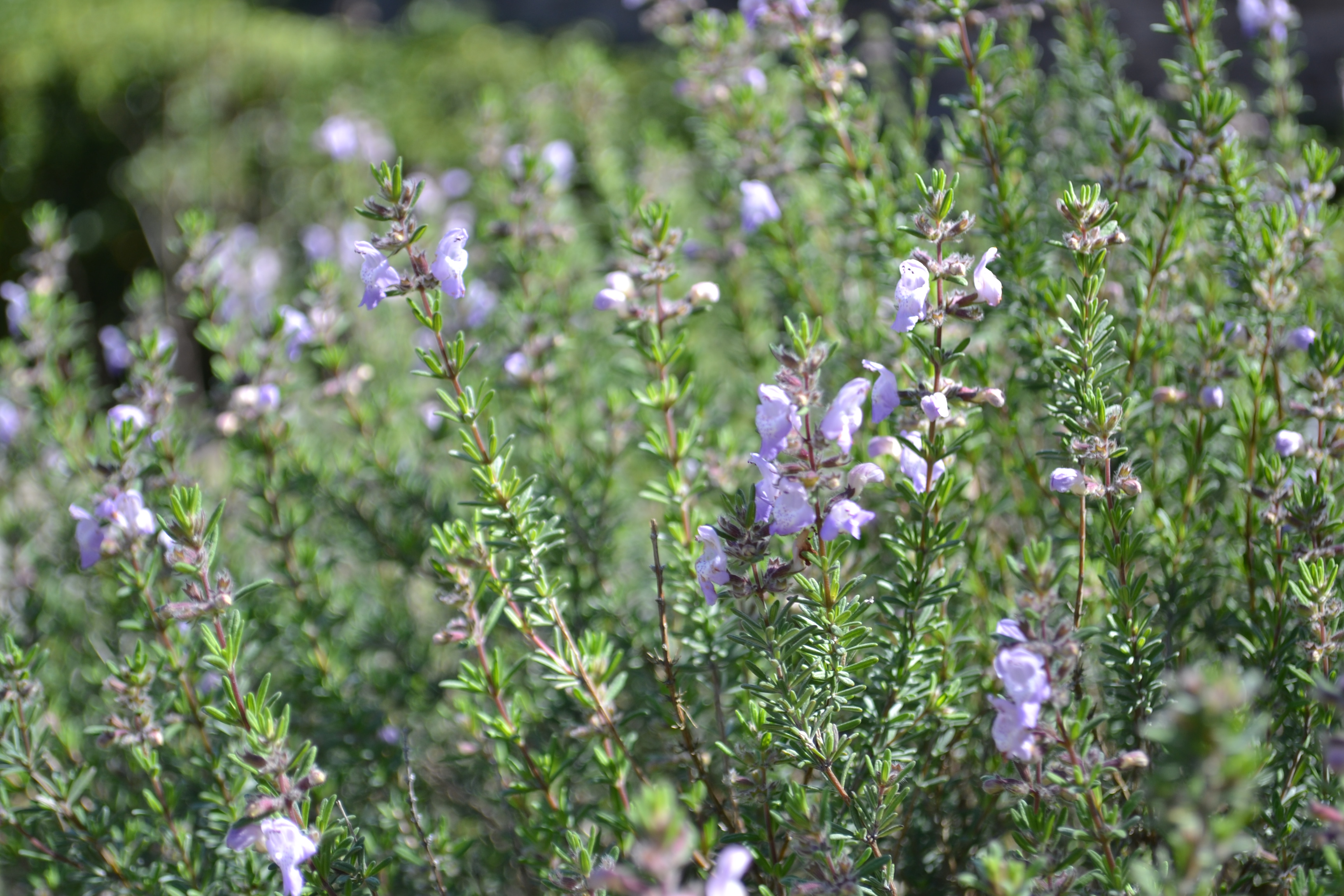
by Beth Bolles | Mar 30, 2017
We often talk about sandy, nutrient poor soil in Florida and how difficult it is for growing many favorite landscape plants. Gardeners may spend considerable time and money amending soils with organic matter to improve quality.
The low maintenance approach is to embrace your sandy soil and consider plants that thrive in sandy, well-drained soil. One very attractive native shrub that actually prefers this type of soil is false rosemary, Conrandina canescens.
False rosemary is a member of the mint family that is well adapted to drier, sandy soils. It can be found in many coastal communities growing in natural areas. It is easily recognized in the spring and early summer by light purple blooms. Considered a small shrub or groundcover, False rosemary needs full sun. One plant can easily spread out to 4-5 feet in diameter with a height of 2-3 feet.
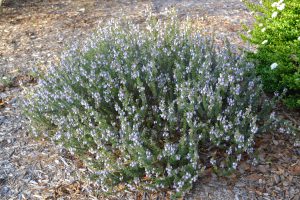
False rosemary is an attractive native plant for Gulf Coast landscapes. Photo by Beth Bolles, UF Escambia County Extension
False rosemary does have aromatic foliage and is attractive to bees. It is a very low maintenance plant once established and its few issues tend to be related to soils with too much moisture and plants being shaded after establishment. New seedlings will emerge around the main plant when growing conditions are right. If you want to try this native plant in your landscape, talk to a local nursery.
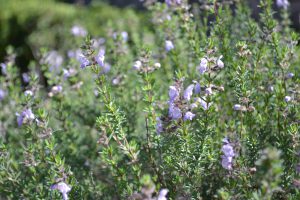
False rosemary flowers are attractive to pollinators. Photo by Beth Bolles, UF Escambia County Extension
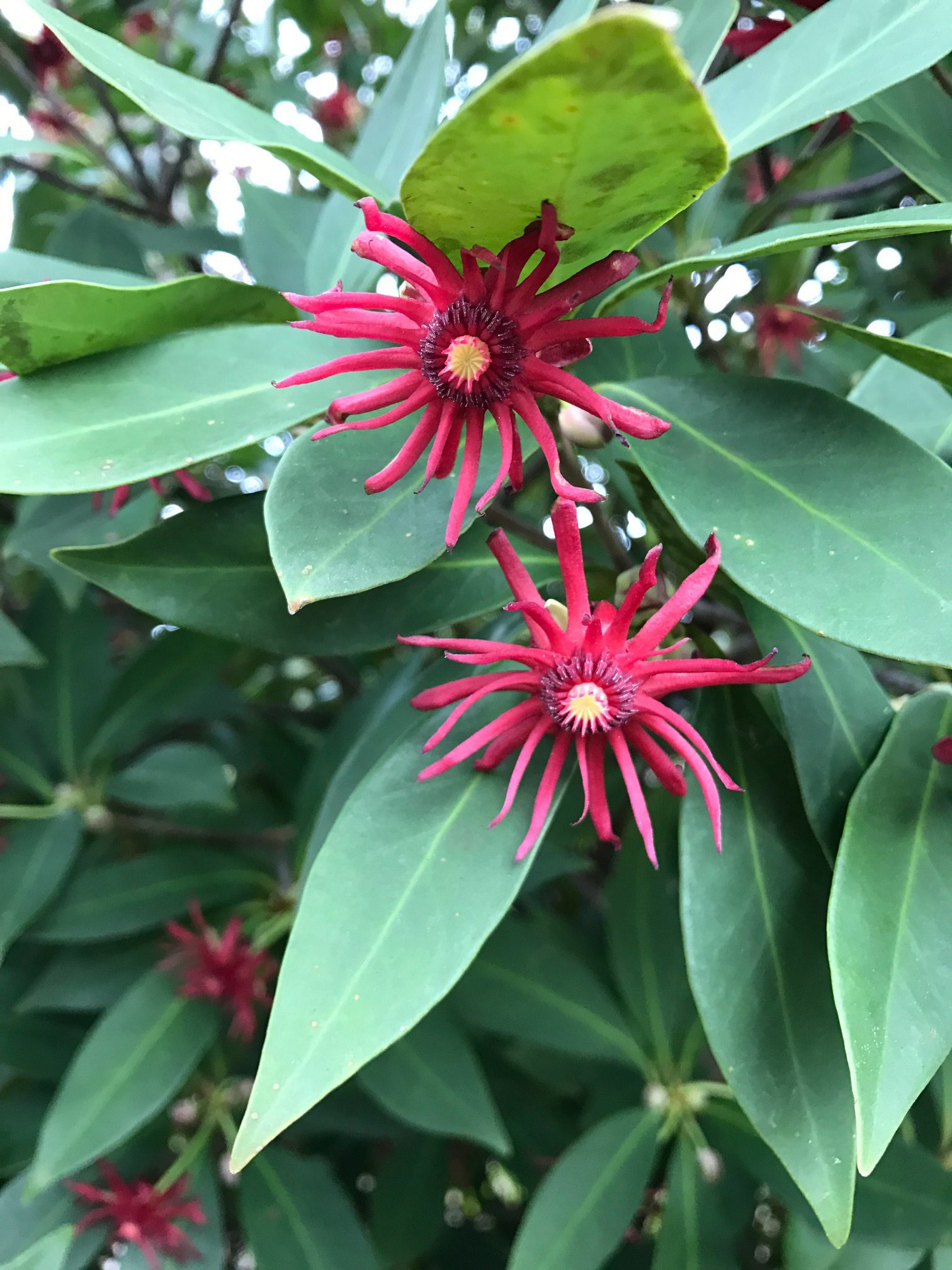
by Mary Salinas | Mar 9, 2017
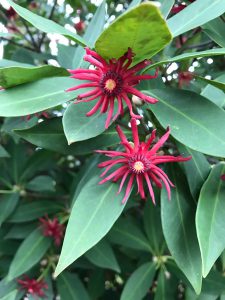
Dark red flowers of Florida red anise arrive in the springtime. Photo credit: Mary Derrick, UF/IFAS Extension.
Springtime brings small but very pretty red blooms on an outstanding native shrub/small tree, Florida red anise (Illicium floridanum). It occurs naturally in the wild in the central and western panhandle of Florida and west along the gulf coast into Louisiana. Its natural environment is in the understory along streams and in rich, wooded areas.
This is a great shrub for a part shade to shady and moist area in your landscape. The dense foliage, dark green leaves and the fact that it is evergreen all year makes it a great choice for an informal hedge. Plan for it to grow to a maximum height of 12 to 15 feet.
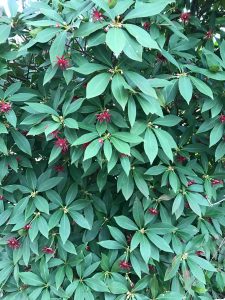
Dense growth habit of Florida red anise. Photo credit: Mary Derrick, UF/IFAS Extension.
The leaves have a licorice-like aroma when crushed but this is NOT the species that gives us the edible culinary anise. Maybe it is that aroma that makes this a relatively pest-free plant!
Yellow anise (Illicium parviflorum) is a very similar native shrub but has small yellow flowers and adapts better to a drier environment. The native range of the yellow anise is north central Florida.
by Larry Williams | Jan 26, 2017
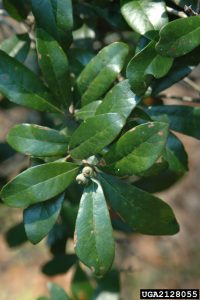
Live oak with immature acorns. Photo credit: Wendy VanDyke Evans, Bugwood.org.
Do you have more acorns than you know what to do with? When oaks produce loads of acorns, it sometimes is called a “mast” year. Do you remember the oak tree pollen and all those catkins that fell from oaks earlier in spring?
Catkins are the male flowers in oaks. Some people refer to them as tassels or worms. The airborne pollen from these catkins were part of the reproductive process in fertilizing the female oak flowers that ultimately resulted in all of these acorns. Oaks produce separate male and female flowers on the same tree. Female flowers in oaks are very small. You’d have to look very close to see them. Many oaks did well in their reproductive efforts this spring. Acorns are oak seeds. This entire process is part of the cycle of life.
There are theories about mast years, wildlife’s use of these acorns and what gardeners can expect next year as a result of this year’s abundant acorn crop. Timing of mast years is still a mystery. Numerous theories exist ranging from weather to geography to the life cycles of predators.
The most likely reason for high production seems to be weather-related. When oak trees have favorable weather at the time of oak flowering and good growing conditions, the mast seems to be increased.
But mast years happen irregularly, making it difficult to understand what causes a mast year. Heavy acorn production can occur twice in a row or it might be separated by several years or more. There’s no good way to predict it.
Mast years are important to wildlife, as acorns are an important food for many animal species. In low crop years, birthrate for some wildlife species, such as squirrels, will decline the following year. This also may involve increased competition for food and survival rates. The recent crop means that more young are likely to be produced by animals that forage for acorns.
Wildlife play a big role in forest regeneration. When acorns drop out of oaks, many animals help distribute these seeds. Squirrels can bury hundreds of acorns. Some of these acorns germinate and grow to become the next generation of oak trees. Some will be eaten by birds, bears, deer, rodents, including squirrels, and other wildlife. Rodents are in turn eaten by carnivores and deer browsing shapes which kinds of plants become established and survive. All those acorns have far-reaching impact on wildlife and our forests.
So, try to keep this in mind as you are fussing with all those acorns in your lawn and landscape this season.
















